Design of Power Cable Lines Partially Exposed to Direct Solar Radiation—Special Aspects
Abstract
1. Introduction
2. Description of the Numerical Model of the Cables
- (1)
- Joule’s heat produced by the current Icc flowing through the copper conductor—in most of the studied cases, the boundary condition of Joule’s heat flux density qJoule is iteratively introduced to obtain a result for which the max permissible temperature in any area of insulation is reached (70 °C). The current-carrying capacity Icc is included in the following formula:
- qcc is the thermal power (heat) generated by the current in the power cable given length, W;
- Ac is the external/side surface of the copper conductor (dissipating heat to the ambient air), m2;
- Icc is the current-carrying capacity, A;
- RAC is the resistance of the power cable for AC current, Ω;
- Dc is the diameter of the copper conductor, m;
- Lu is the unit length of the copper conductor, m.
- (2)
- The heat generated by solar radiation—presented as the authors’ functional determination of the density of heat flux reaching the insulation surface qsolar(x), W/m2. This relationship has been transformed for use in the Cartesian coordinate system. The intensity of solar radiation depends on the height of the sun above the horizon, which is associated with the absorption of solar radiation by the atmosphere.
- Hs = 1120 W/m2 = const;
- ks = 1/sin(Sh), where Sh is the sun altitude, °,
- f(x, rs) the function depends on the adopted coordinate system x and the external radius of the cable rs = Ds/2, -;
- σabs is the PVC absorption coefficient, -.
- (1)
- The radiated heat from the system—described by the radiation model P1 and DO (Discrete Ordinates) [29]; implemented in the ANSYS Fluent software.
- (2)
- Heat conduction—mainly in solids, i.e., considered in the PVC insulation and sheath/jacket, but also in the boundary layer. Assuming the isotropicity of the tested materials, the condition regarding the density of conducted energy in the system can be described by the relationship according to Fourier’s law:
- λPVC is the thermal conductivity of the PVC insulation and sheath, W/(m·K);
- ∇t is the three-dimensional temperature gradient, K/m;
- (3)
- Heat convection—the density of the heat flux transferred by convection is given by the relationship:
- αconv is the heat transfer coefficient, W/(m2·K);
- tPVC is the power cable external surface temperature, K;
- tair is the air temperature around power cable, K.
3. Computer Simulations and Results
3.1. The Effect of the Wind Speed, Wind Direction and Cables Layout
- From North to South;
- From South to North;
- From the top to bottom of the arrangement of the cables.
3.2. Power Cables in the Ground vs. Power Cables in Free Air
4. Conclusions
Author Contributions
Funding
Conflicts of Interest
References
- Czapp, S.; Czapp, M.; Szultka, S.; Tomaszewski, A. Ampacity of power cables exposed to solar radiation—Recommendations of standards vs. CFD simulations. E3S Web Conf. 2018, 70, 1–5. [Google Scholar] [CrossRef]
- Spyra, F. External factors influence on current-carrying capacity in an electric power cable line. Energetyka 2007, 6–7, 451–454. [Google Scholar]
- Brender, D.; Lindsey, T. Effect of rooftop exposure in direct sunlight on conduit ambient temperatures. In Proceedings of the 2006 IEEE Industry Applications Conference Forty-First IAS Annual Meeting, Tampa, FL, USA, 8–12 October 2006. [Google Scholar]
- Szpyra, W.; Kacejko, P.; Pijarski, P.; Wydra, M.; Tarko, R.; Kmak, J. Dynamic management of transmission capacity in power systems. Acta Energetica 2017, 4, 68–77. [Google Scholar]
- Czapp, S.; Szultka, S.; Tomaszewski, A.; Szultka, A. Effect of solar radiation on current-carrying capacity of PVC-insulated power cables—The numerical point of view. Tehnicki Vjesnik 2019, 26, 1821–1826. [Google Scholar]
- IEC. IEC 60287-1-1:2001. Electric Cables–Calculation of the Current Rating–Part. 1-1: Current Rating Equations (100 % load factor) and Calculation of Losses–General; International Electrotechnical Commission: Geneva, Switzerland, 2001. [Google Scholar]
- IEC. IEC 60287-2-1:2001. Electric Cables–Calculation of the Current Rating–Part. 2-1: Thermal Resistance–Calculation of the Thermal Resistance; International Electrotechnical Commission: Geneva, Switzerland, 2001. [Google Scholar]
- IEC. IEC 60287-3-1:1999. Electric Cables–Calculation of the Current Rating–Part. 3-1: Sections on Operating Conditions–Reference Operating Conditions and Selection of Cable Type; International Electrotechnical Commission: Geneva, Switzerland, 1999. [Google Scholar]
- IEC. IEC 60364-5-52:2011. Low-Voltage Electrical Installations–Part. 5-52: Selection and Erection of Electrical Equipment–Wiring Systems; International Electrotechnical Commission: Geneva, Switzerland, 2011. [Google Scholar]
- IEEE Standard Power Cable Ampacity Tables; Institute of Electrical and Electronics Engineers: Piscataway, NJ, USA, 1994.
- Neher, J.H.; McGrath, M.H. The calculation of the temperature rise and load capability of cable systems. Trans. Am. Inst. Electr. Eng. Part III: Power Appar. Syst. 1957, 76, 752–764. [Google Scholar] [CrossRef]
- De Leon, F. Calculation of Underground Cable Ampacity. CYME Int. TD: St. Bruno, QC, Canada, 2005. [Google Scholar]
- De Leon, F. Major factors affecting cable ampacity. In Proceedings of the IEEE Power Engineering Society General Meeting, Montreal, QC, Canada, 18–22 June 2006. [Google Scholar]
- Du, Y.; Burnett, J. Current distribution in single-core cables connected in parallel. IEEE Proc.-Gener. Transm. Distrib. 2001, 148, 406–412. [Google Scholar] [CrossRef]
- Baazzim, M.S.; Al-Saud, M.S.; El-Kady, M.A. Comparison of Finite-Element and IEC methods for cable thermal analysis under various operating environments. Int J. Elect Robot. Electron. Commun Eng. 2014, 8, 470–475. [Google Scholar]
- Xu, X.; Yuan, Q.; Sun, X.; Hu, D.; Wang, J. Simulation analysis of carrying capacity of tunnel cable in different laying ways. Int. J. Heat Mass Transf. 2019, 130, 455–459. [Google Scholar] [CrossRef]
- Sedaghat, A.; Lu, H.; Bokhari, A.; De Leon, F. Enhanced thermal model of power cables installed in ducts for ampacity calculations. IEEE Trans. Power Deliv. 2018, 33, 2404–2411. [Google Scholar] [CrossRef]
- Xiong, L.; Chen, Y.; Jiao, Y.; Wang, J.; Hu, X. Study on the Effect of cable group laying mode on temperature field distribution and cable ampacity. Energies 2019, 12, 3397. [Google Scholar] [CrossRef]
- Makhkamova, I.; Taylor, P.C.; Bumby, J.R.; Mahkamov, K. CFD Analysis of the Thermal State of an Overhead Line Conductor. In Proceedings of the 43rd International Universities Power Engineering Conference, Padova, Italy, 7 September 2008; pp. 1–4. [Google Scholar]
- Makhkamova, I.; Mahkamov, K.; Taylor, P.C. CFD thermal modelling of Lynx overhead conductors in distribution networks with integrated renewable energy driven generators. Appl. Therm. Eng. 2013, 58, 522–535. [Google Scholar] [CrossRef]
- Zeńczak, M. Approximate Relationships for Calculation of Current-Carrying Capacity of Overhead Power Transmission Lines in Different Weather Conditions. In Proceedings of the Progress in Applied Electrical Engineering (PAEE), Koscielisko, Poland, 25–30 June 2017. [Google Scholar]
- Liang, K.; Li, Z.; Chen, M.; Jiang, H. Comparisons between heat pipe, thermoelectric system, and vapour compression refrigeration system for electronics cooling. Appl. Therm. Eng. 2019, 146, 260–267. [Google Scholar] [CrossRef]
- Staton, D.A.; Cavagnino, A. Convection Heat Transfer and Flow Calculations Suitable for Analytical Modelling of Electric Machines. In Proceedings of the 32nd Annual Conference on IEEE Industrial Electronics, Paris, France, 6–10 November 2006; pp. 4841–4846. [Google Scholar]
- Amr, A.A.; Hassan, A.A.M.; Abdel-Salam, M.; El-Sayed, A.H.M. Enhancement of photovoltaic system performance via passive cooling. In Proceedings of the Nineteenth International Middle East Power Systems Conference (MEPCON), Cairo, Egypt, 19–21 December 2017; pp. 1430–1439. [Google Scholar]
- Bădălan, N.; Svasta, P. Fan vs. passive heat sink with heat pipe in cooling of high power LED. In Proceedings of the IEEE 23rd International Symposium for Design and Technology in Electronic Packaging (SIITME), Constanta, Romania, 26–29 October 2017; pp. 296–299. [Google Scholar]
- Dupont, V.; Billet, C.; Nicolle, T. High performances passive two-phase loops for power electronics cooling. In Proceedings of the International Exhibition and Conference for Power Electronics, Intelligent Motion, Renewable Energy and Energy Management, Nuremberg, Germany, 10–12 May 2016. [Google Scholar]
- Imburgia, A.; Romano, P.; Chen, G.; Rizzo, G.; Sanseverino, E.R.; Viola, F.; Ala, G. The industrial applicability of PEA space charge measurements for performance optimization of HVDC power cables. Energies 2019, 12, 4186. [Google Scholar] [CrossRef]
- Andersen, S.A. Automatic Refrigeration; MacLaren for Danfoss: Nordborg, Denmark, 1959. [Google Scholar]
- Modest, F.M. Radiative Heat Transfer, 3rd ed.; Academic Press: Cambridge, MA, USA, 2013. [Google Scholar]
- Czapp, S.; Szultka, S.; Tomaszewski, A. CFD-based evaluation of current-carrying capacity of power cables installed in free air. In Proceedings of the 18th International Scientific Conference on Electric Power Engineering (EPE), Kouty nad Desnou, Czech Republic, 17–19 May 2017; pp. 692–697. [Google Scholar]
- Czapp, S.; Ratkowski, F. Effect of soil moisture on current-carrying capacity of low-voltage power cables. Przeglad Elektrotechniczny 2019, 95, 154–159. [Google Scholar] [CrossRef]
- Chojnacki, A.Ł. Analysis of reliability of low-voltage cable lines. Przeglad Elektrotechniczny 2017, 93, 14–18. [Google Scholar]
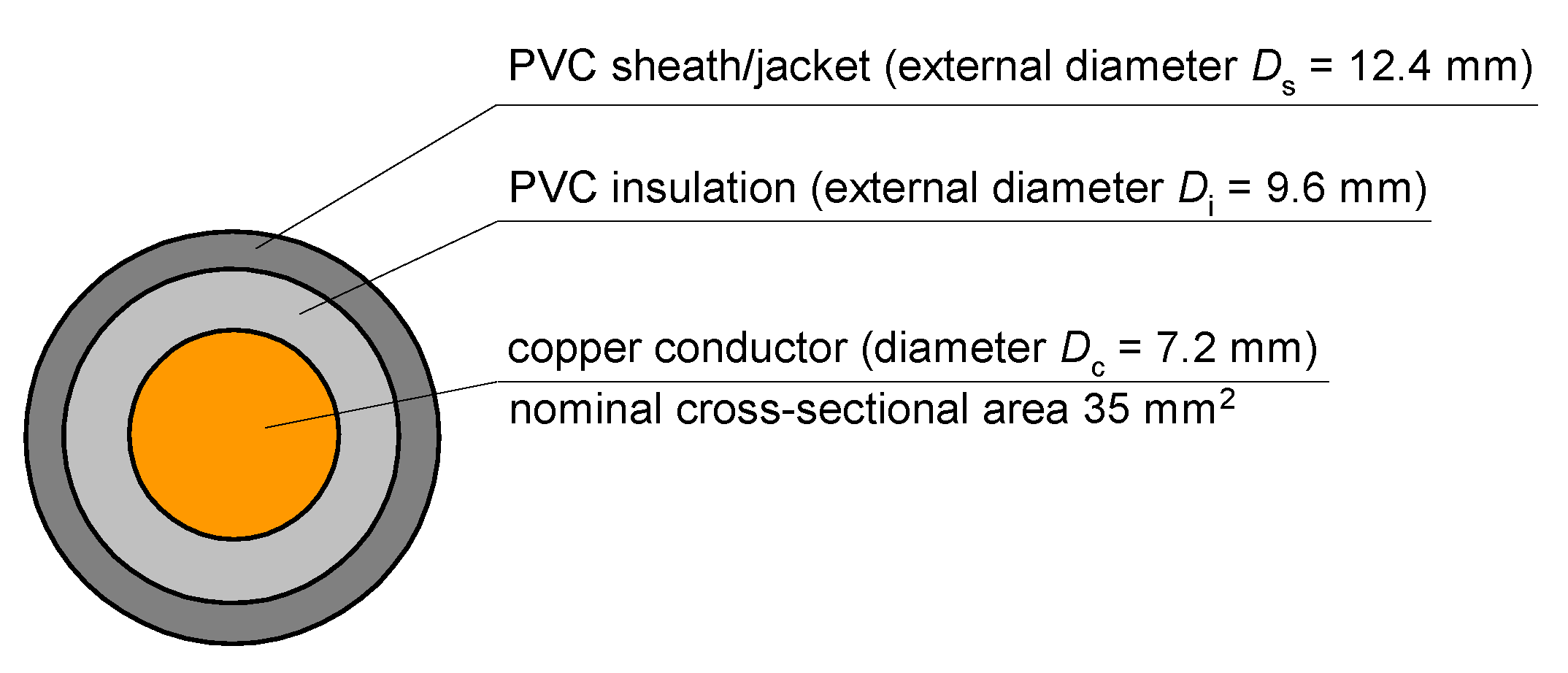
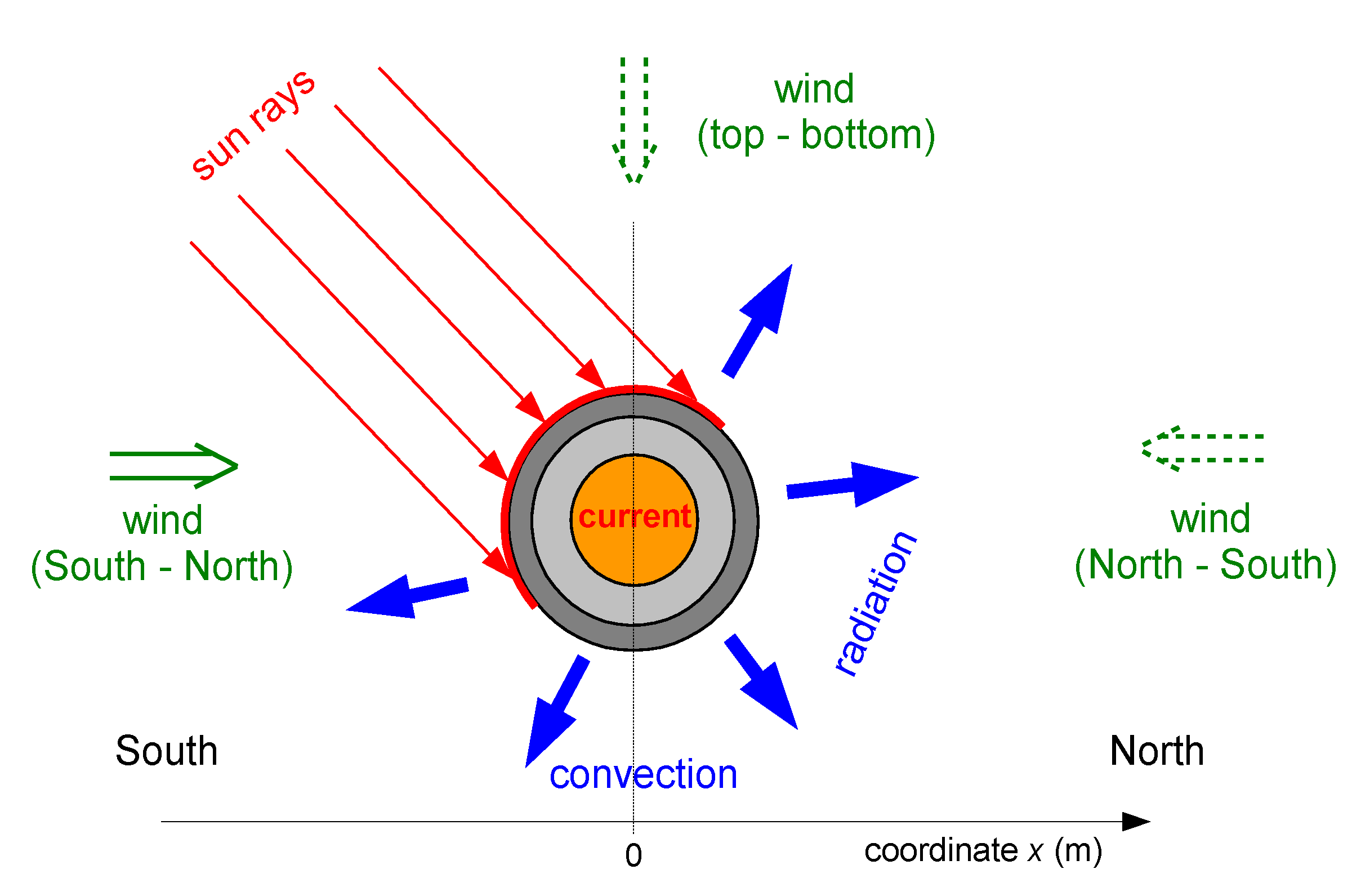
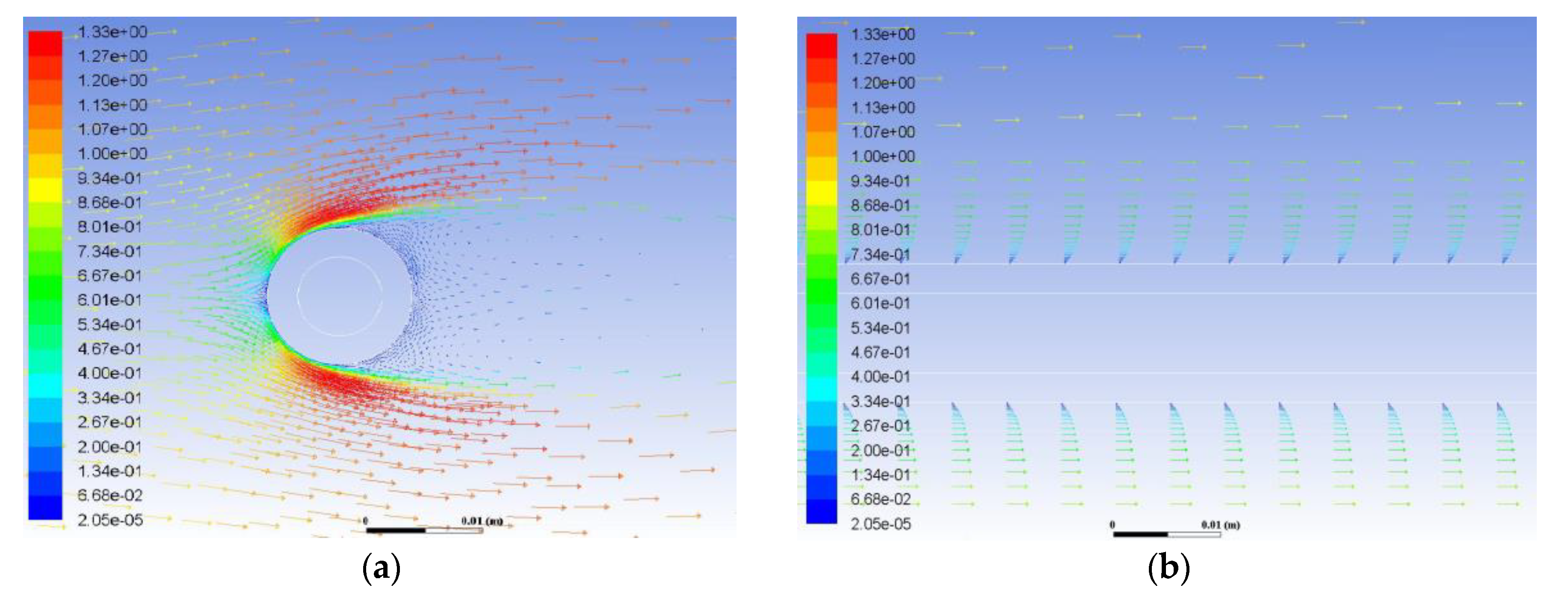
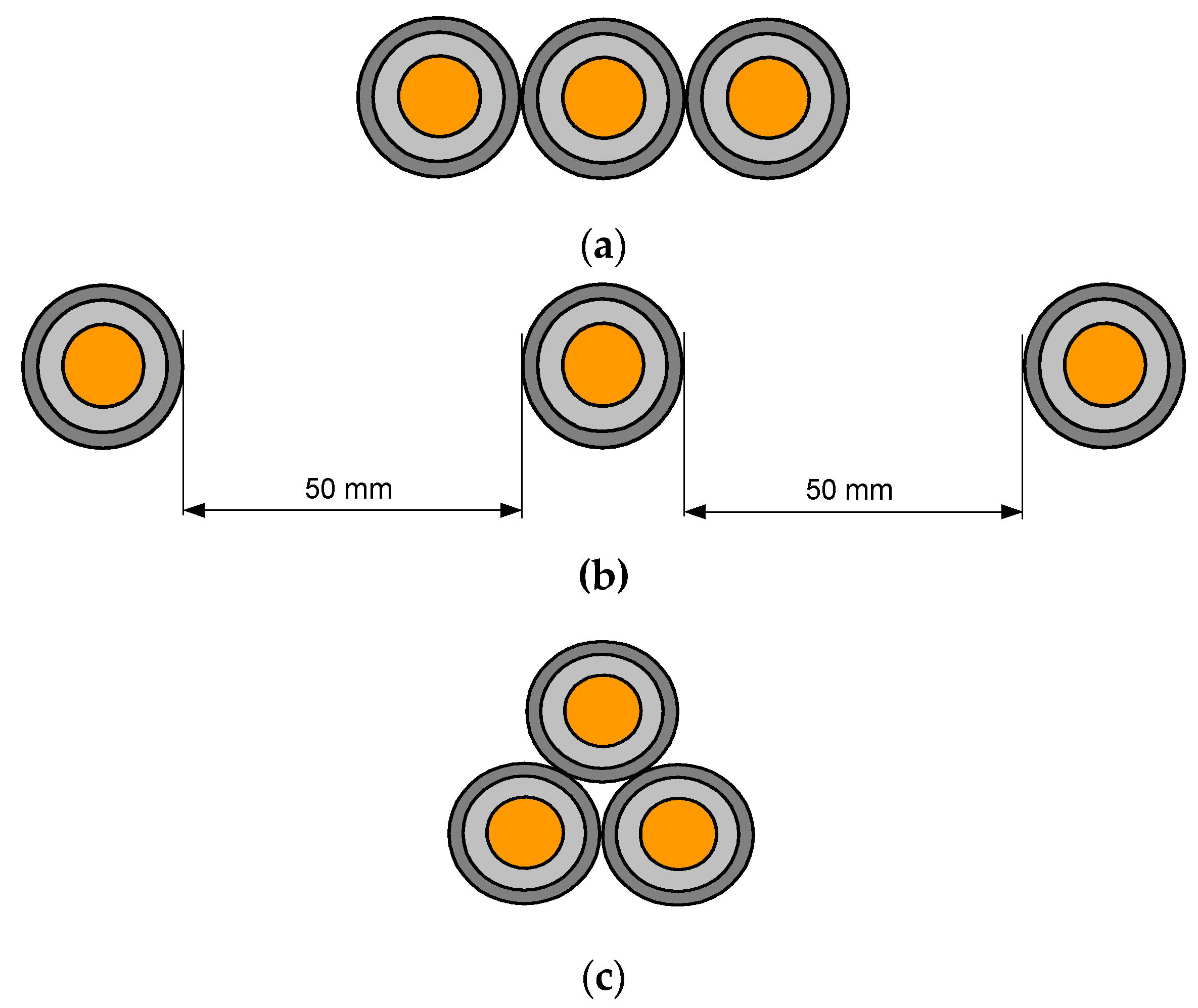
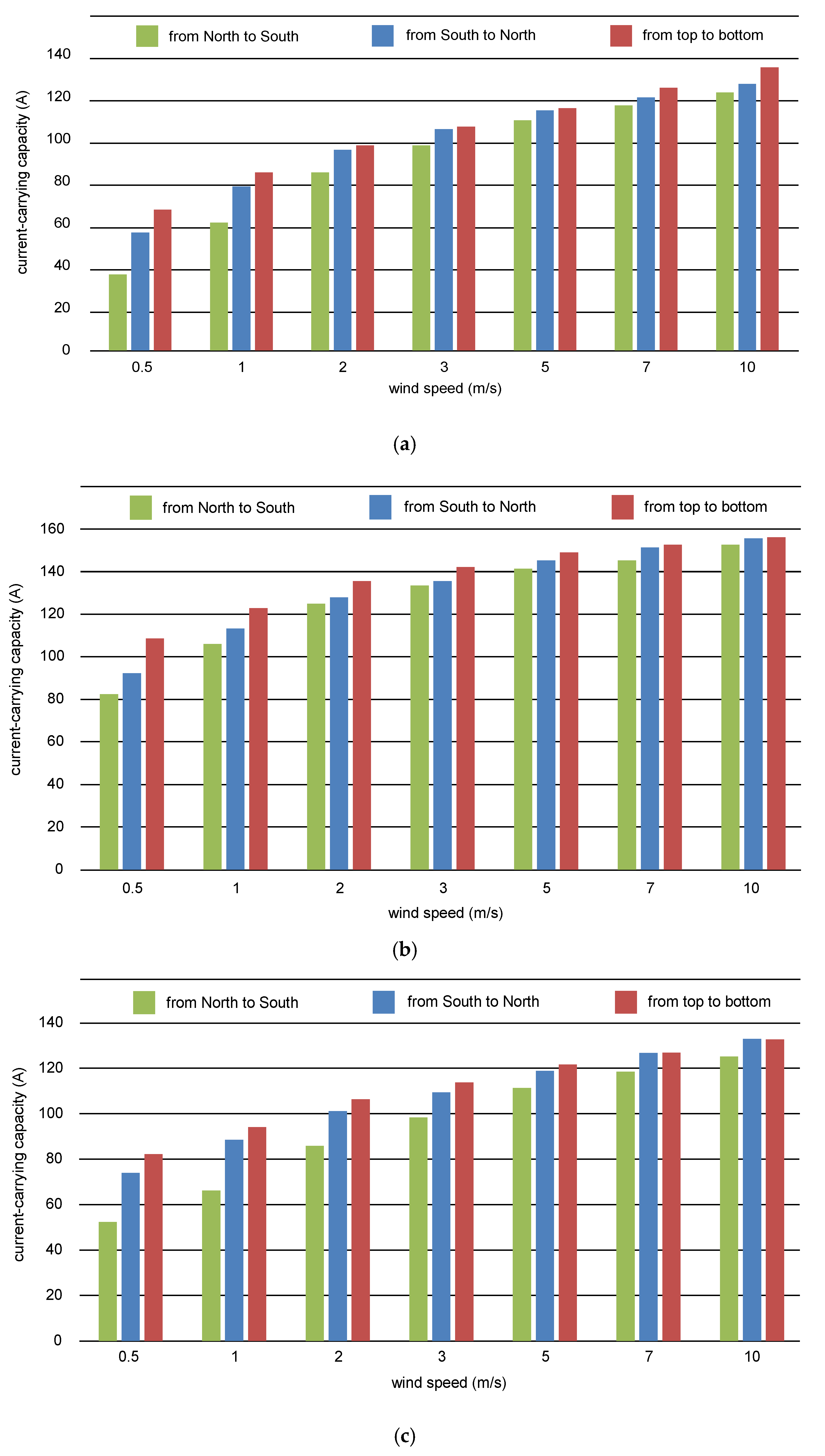
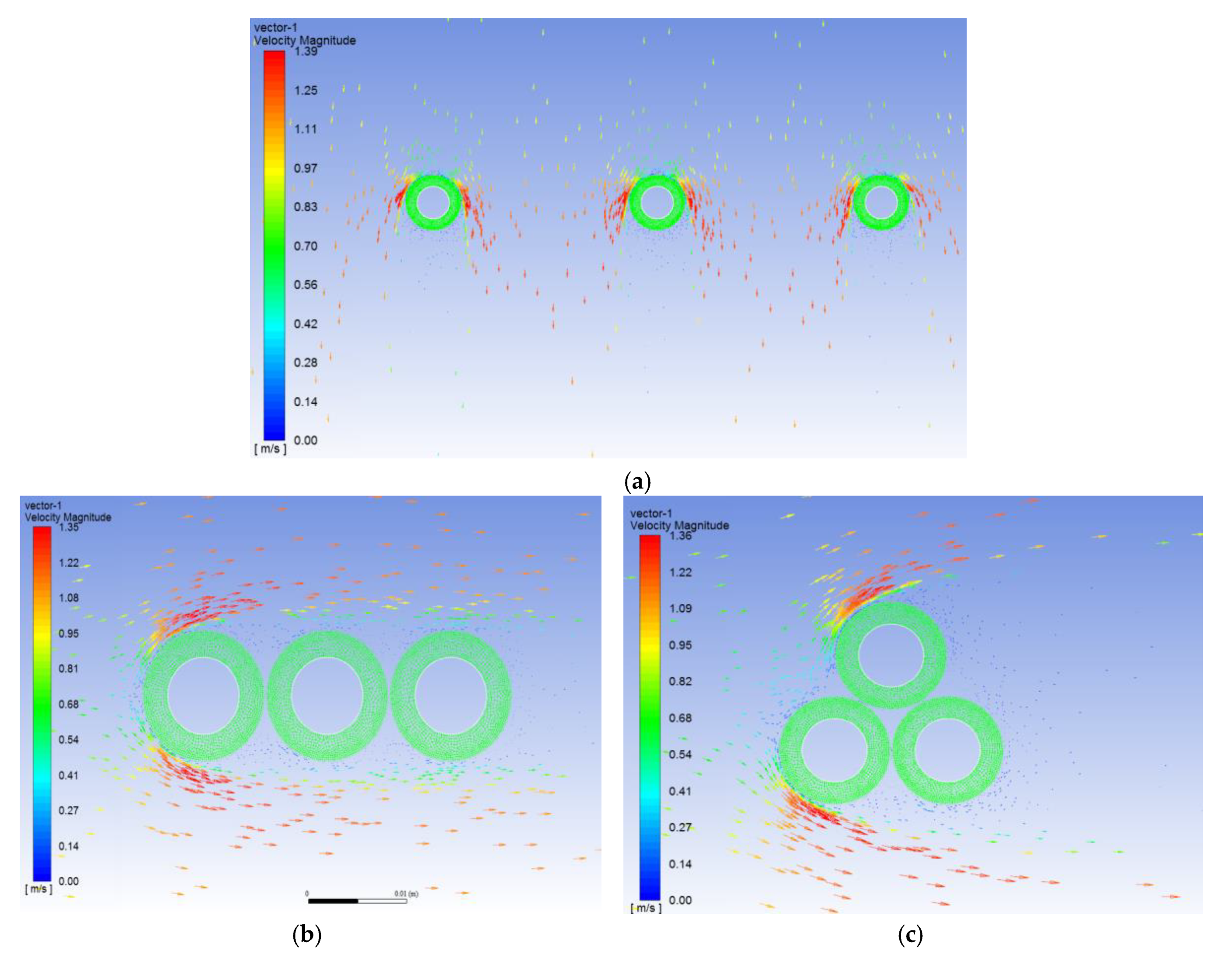
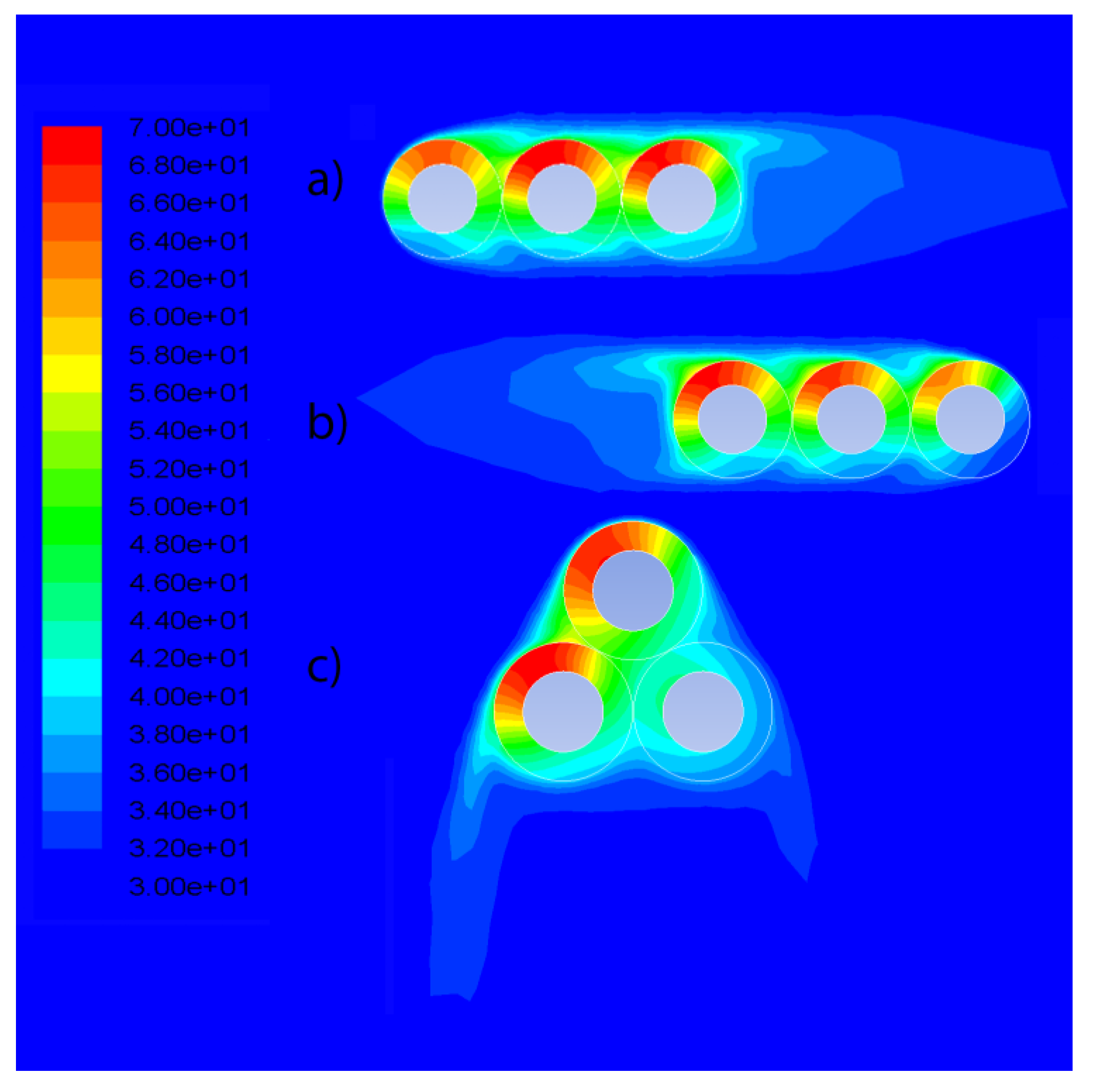
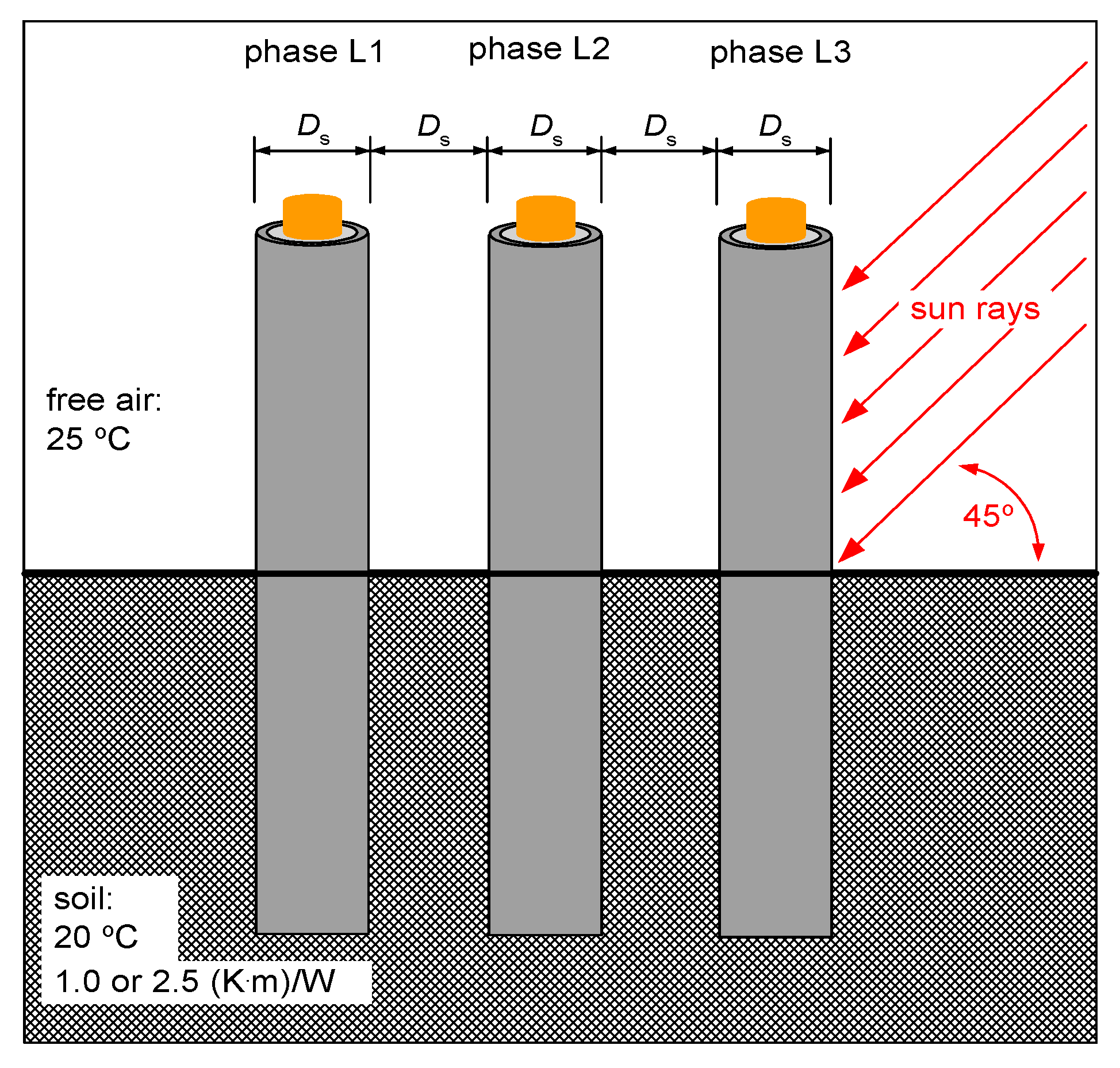
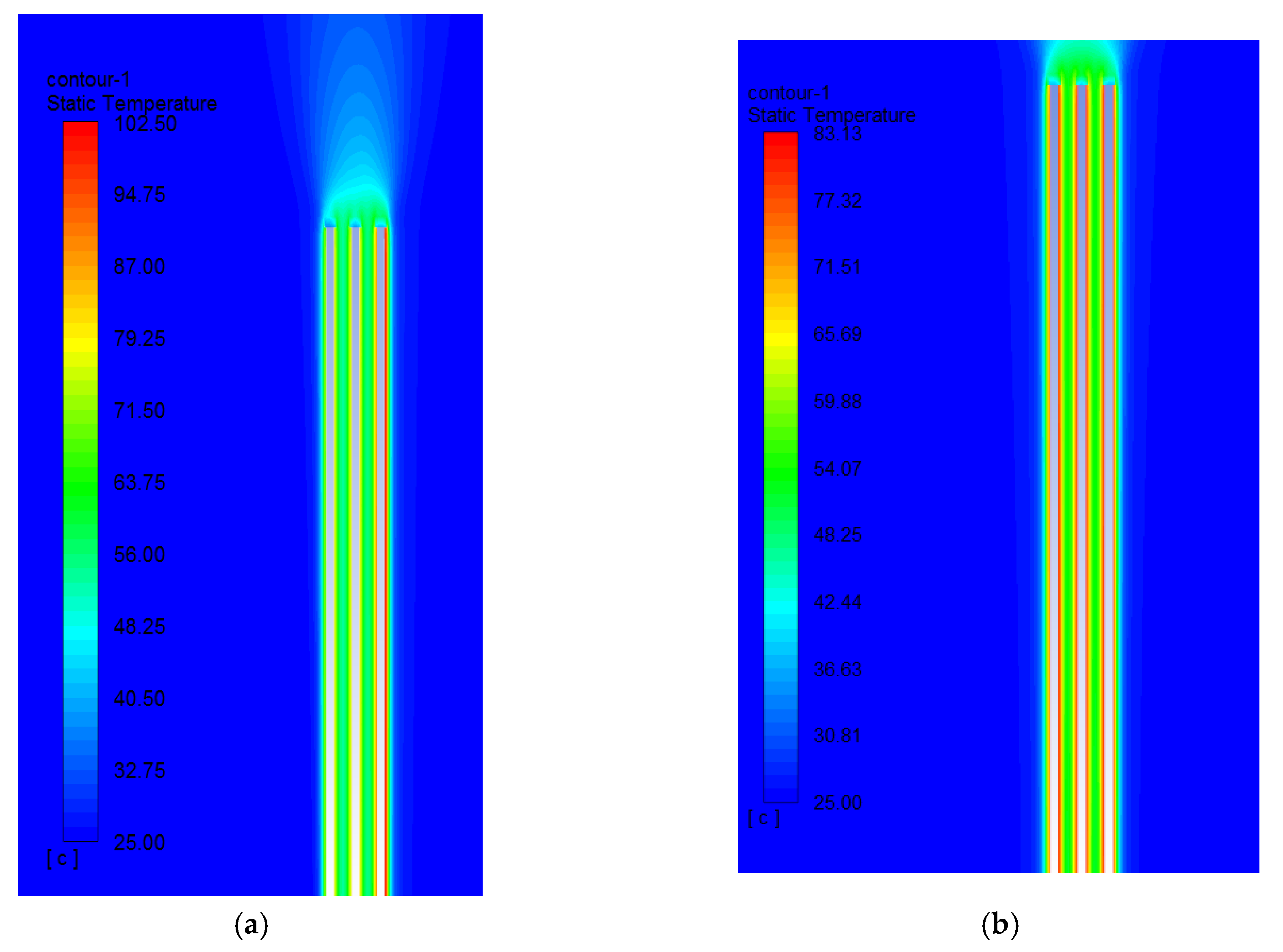
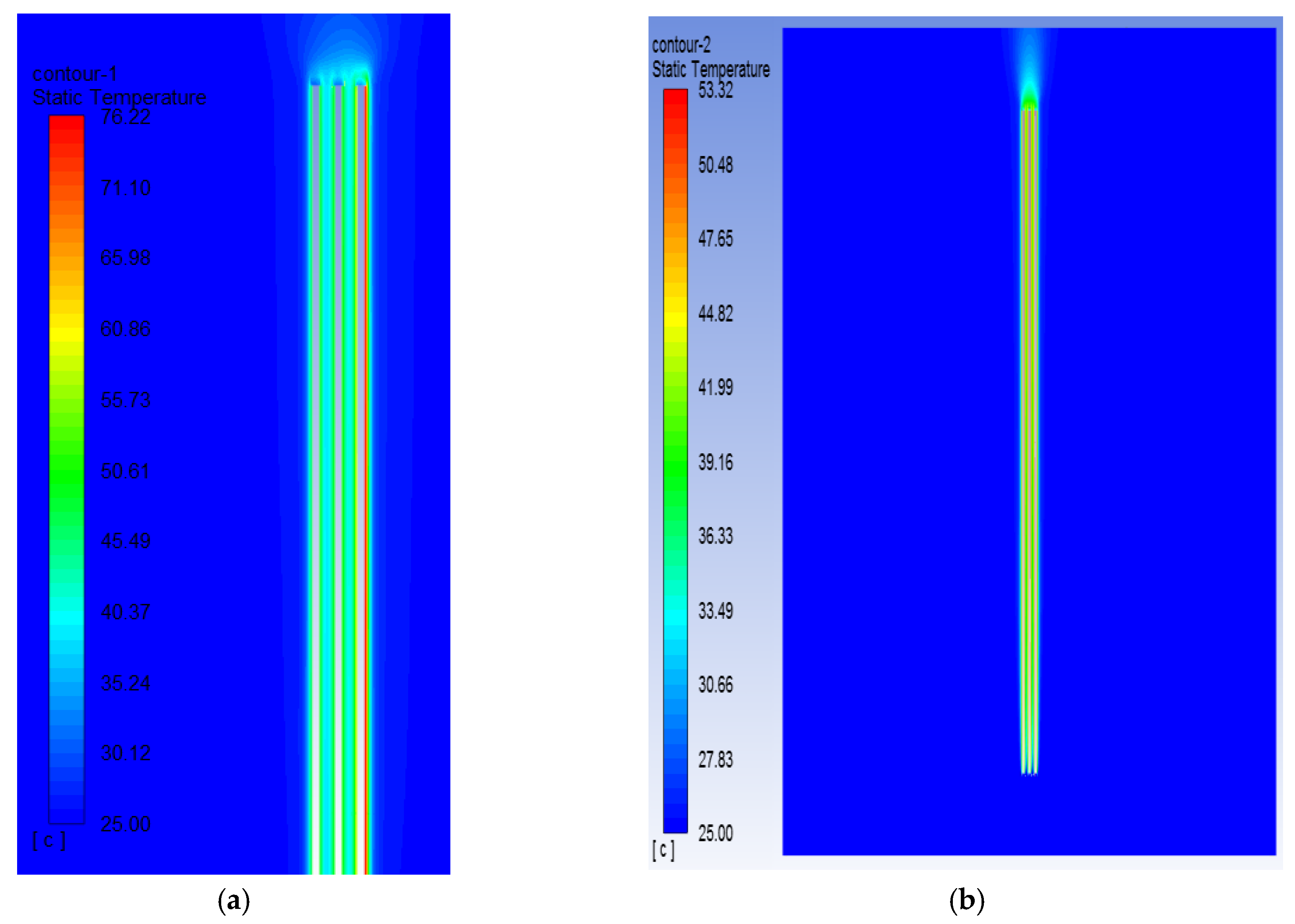
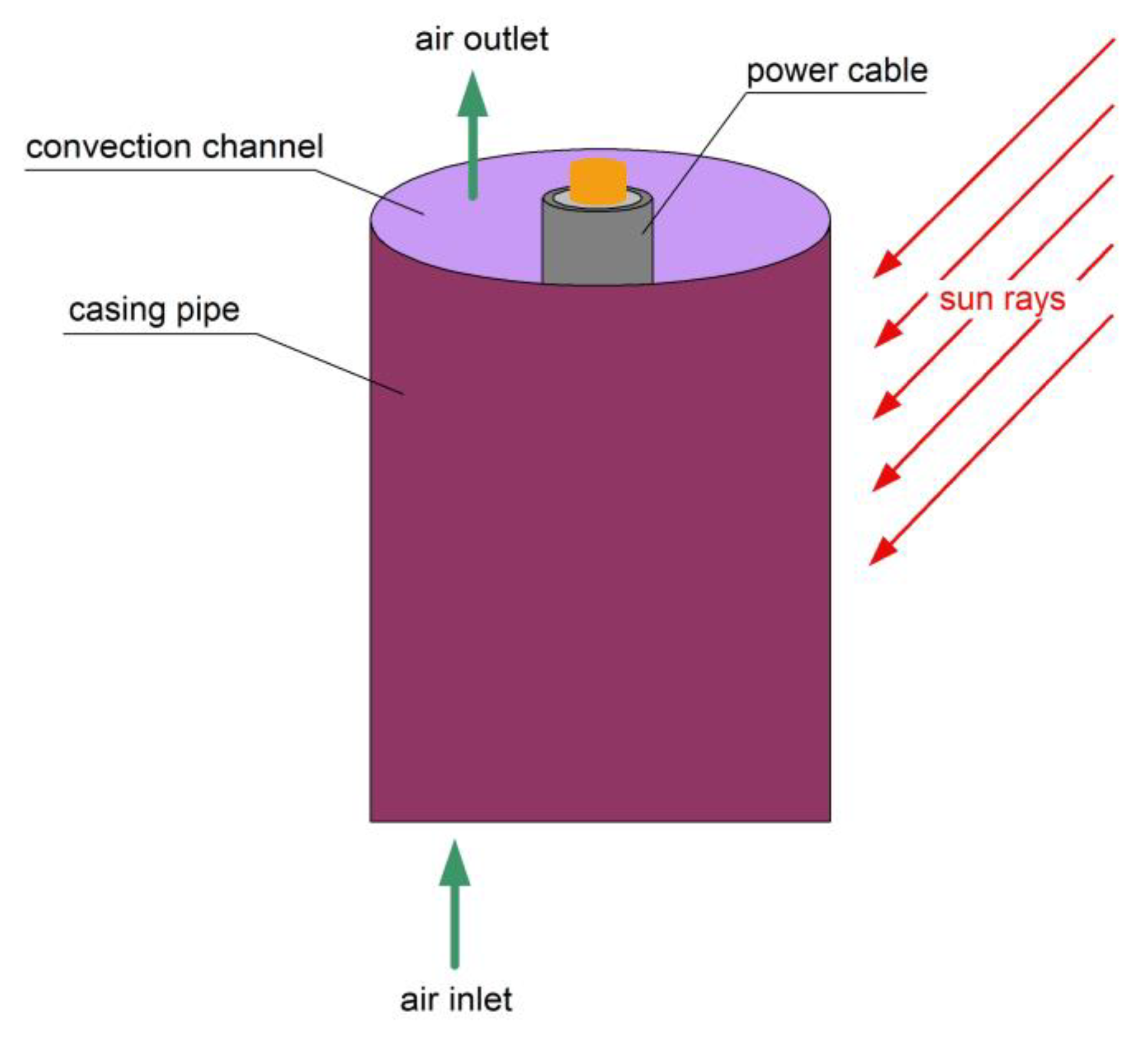
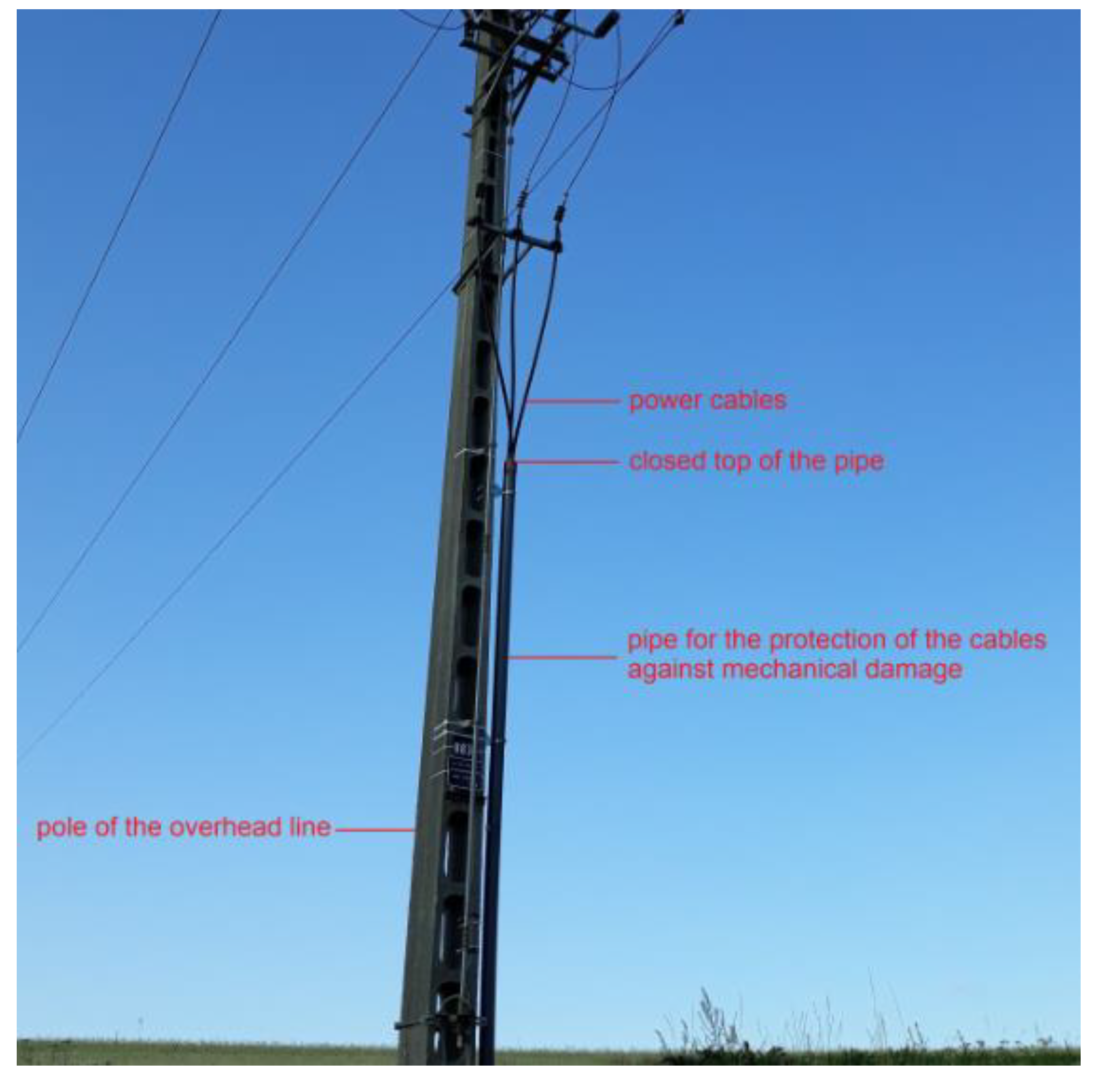
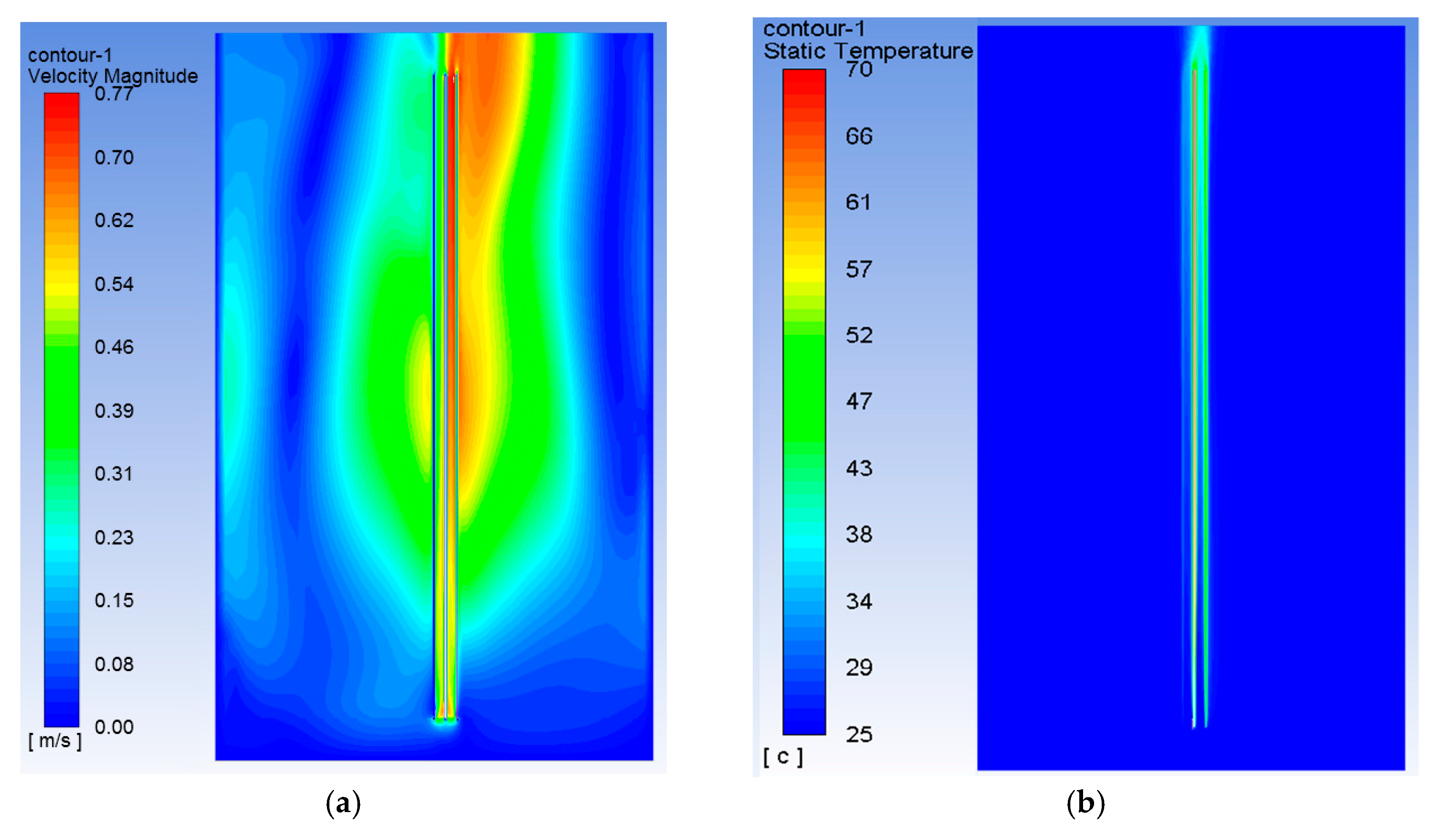
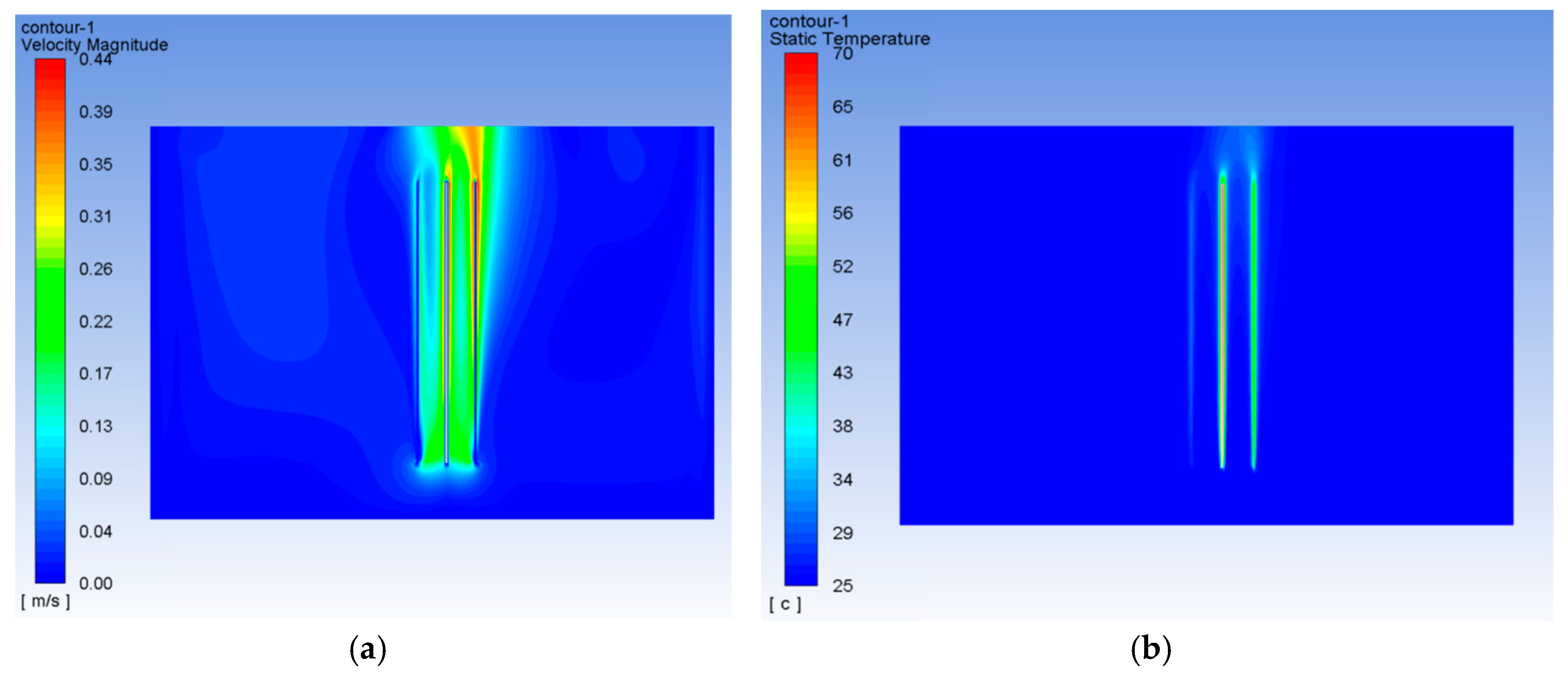
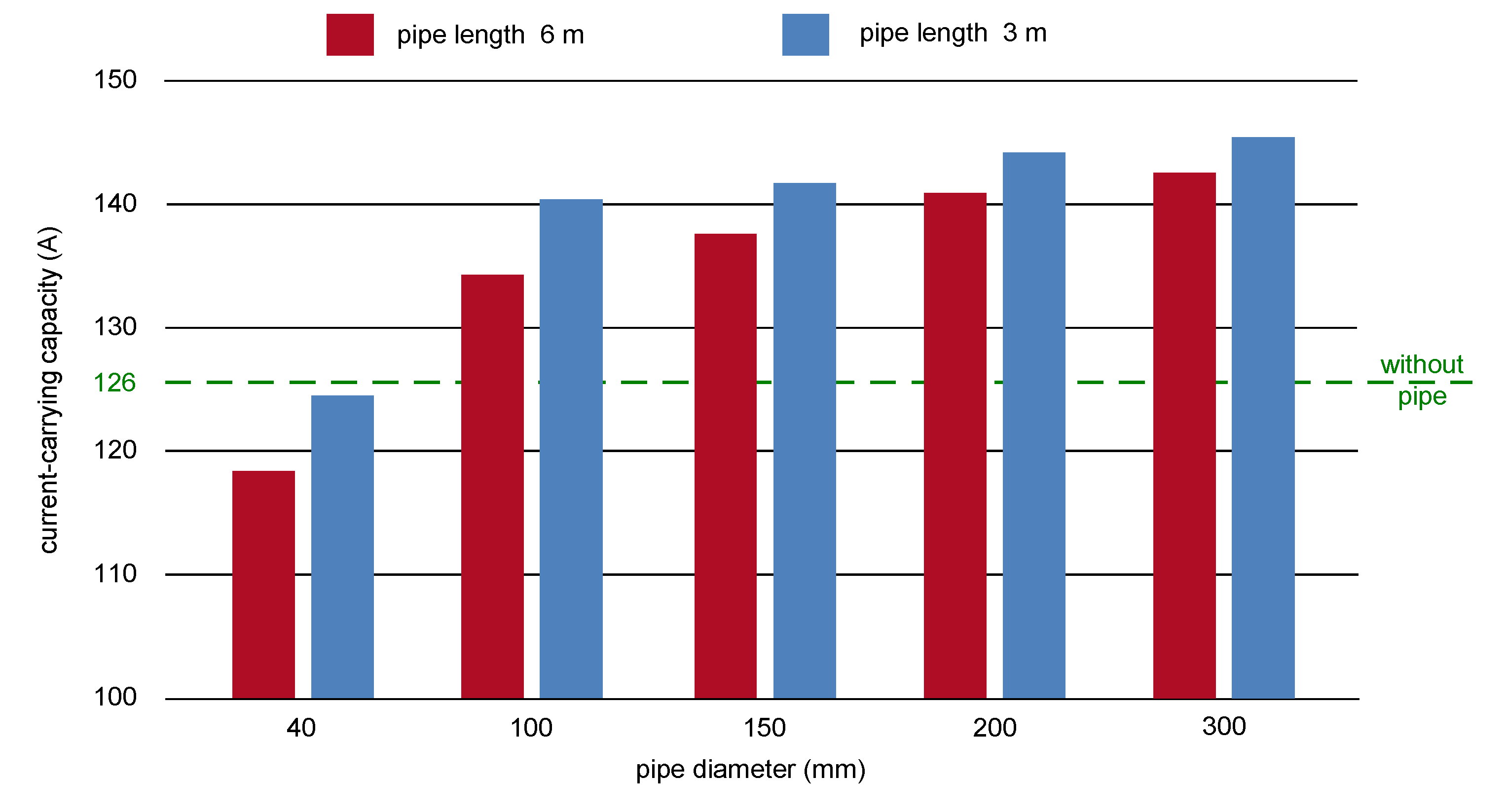

© 2020 by the authors. Licensee MDPI, Basel, Switzerland. This article is an open access article distributed under the terms and conditions of the Creative Commons Attribution (CC BY) license (http://creativecommons.org/licenses/by/4.0/).
Share and Cite
Czapp, S.; Szultka, S.; Tomaszewski, A. Design of Power Cable Lines Partially Exposed to Direct Solar Radiation—Special Aspects. Energies 2020, 13, 2650. https://doi.org/10.3390/en13102650
Czapp S, Szultka S, Tomaszewski A. Design of Power Cable Lines Partially Exposed to Direct Solar Radiation—Special Aspects. Energies. 2020; 13(10):2650. https://doi.org/10.3390/en13102650
Chicago/Turabian StyleCzapp, Stanislaw, Seweryn Szultka, and Adam Tomaszewski. 2020. "Design of Power Cable Lines Partially Exposed to Direct Solar Radiation—Special Aspects" Energies 13, no. 10: 2650. https://doi.org/10.3390/en13102650
APA StyleCzapp, S., Szultka, S., & Tomaszewski, A. (2020). Design of Power Cable Lines Partially Exposed to Direct Solar Radiation—Special Aspects. Energies, 13(10), 2650. https://doi.org/10.3390/en13102650





